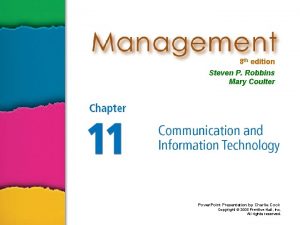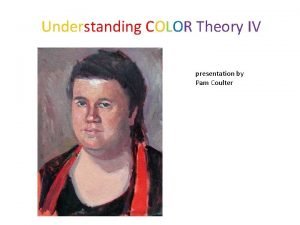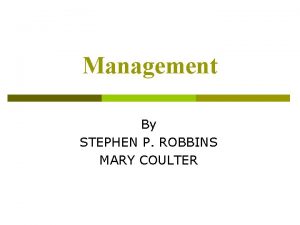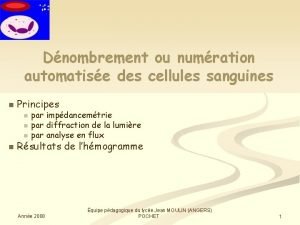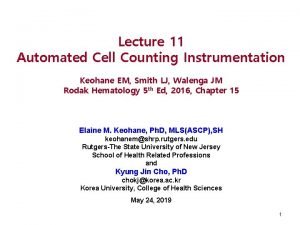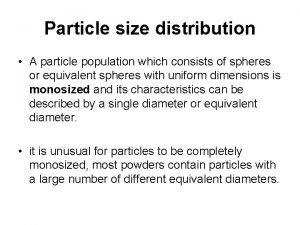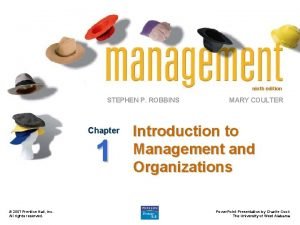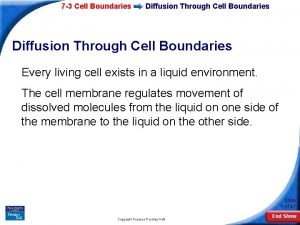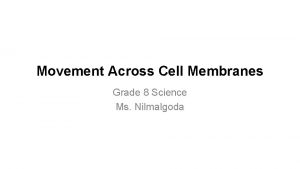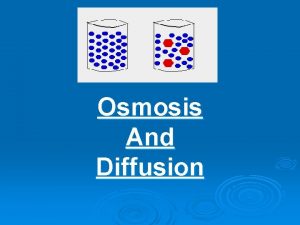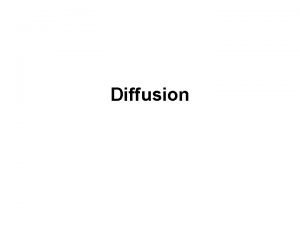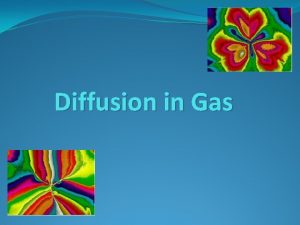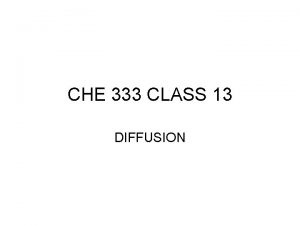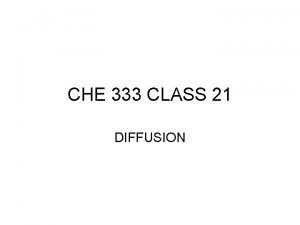Coulter CELL IN ITS ENVIRONMENT Diffusion The cell











- Slides: 11

Coulter CELL IN ITS ENVIRONMENT

Diffusion The cell membrane is selectively permeable, which means that some substances can pass through the membrane while others cannot. Diffusion- is the process by which molecules move from an area of higher concentration to an area of lower concentration. Concentration- is the amount of a substance in a given volume.

What causes diffusion? Molecules are always moving. As they move they bump into each other. The more molecules in an area the more they will collide. Collisions cause molecules to move away from each other. The molecules will continue to spread out until they are eventually evenly spread out throughout the area.

Diffusion of oxygen There is higher concentration of oxygen molecules in water than inside the cell. The cell membrane is permeable to oxygen molecules. Oxygen molecules diffuse from the higher concentration to lower concentration

Osmosis!! Osmosis- is the diffusion of water molecules through a selectively permeable membrane Because cells cannot function properly without adequate water, many cellular processes depend on osmosis.

Osmosis and diffusion In osmosis water molecules move by diffusion from an area where they are highly concentrated through the cell membrane to an area where they are less concentrated.

Effects of osmosis 9 A, concentration of water is the same as it is inside the cell (normal shape) 9 B, the concentration of water molecules outside the cell is lower than the concentration of water molecules inside the cell. (water moves out) 9 C, the concentration of water outside the cell is greater than it is inside the cell. (water moves in)

Active transport Passive transport- the movement of dissolved materials through a cell membrane without using cellular energy. (down hill) Active transport- the movement of materials through a cell membrane using cellular energy. (up hill) Active transport requires the cell to use its own energy, while passive transport does not.

Active Transport proteins in the cell “pick up” molecules outside the cell and carry them in, using energy. Can also carry molecules out of the cell Substances that are carried include calcium, potassium, and sodium

Active transport by engulfing The cell membrane surrounds and engulfs, or encloses, a particle One the particle is engulfed, the cell membrane wraps around the particle and forms a vacuole within the cells.




